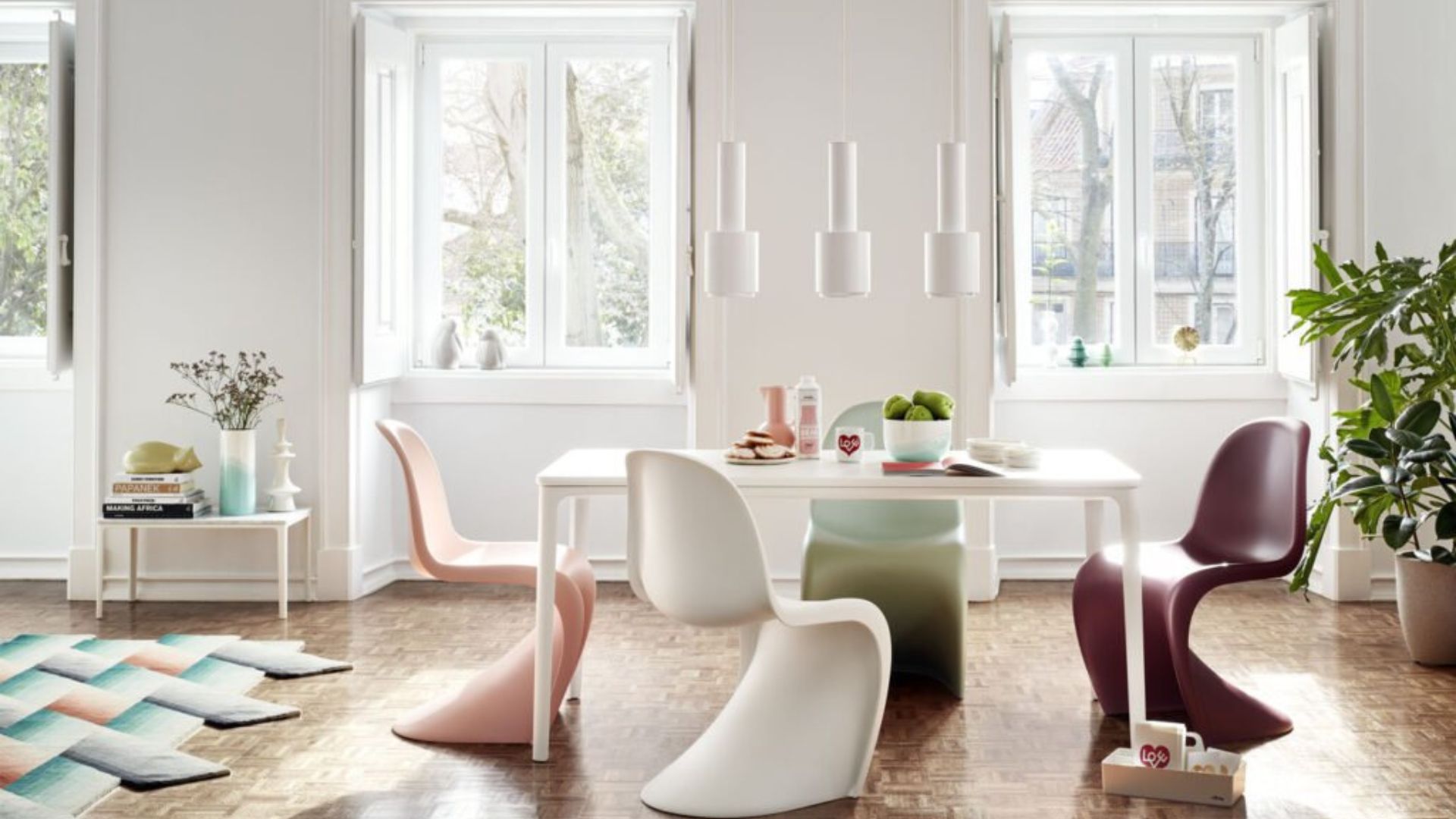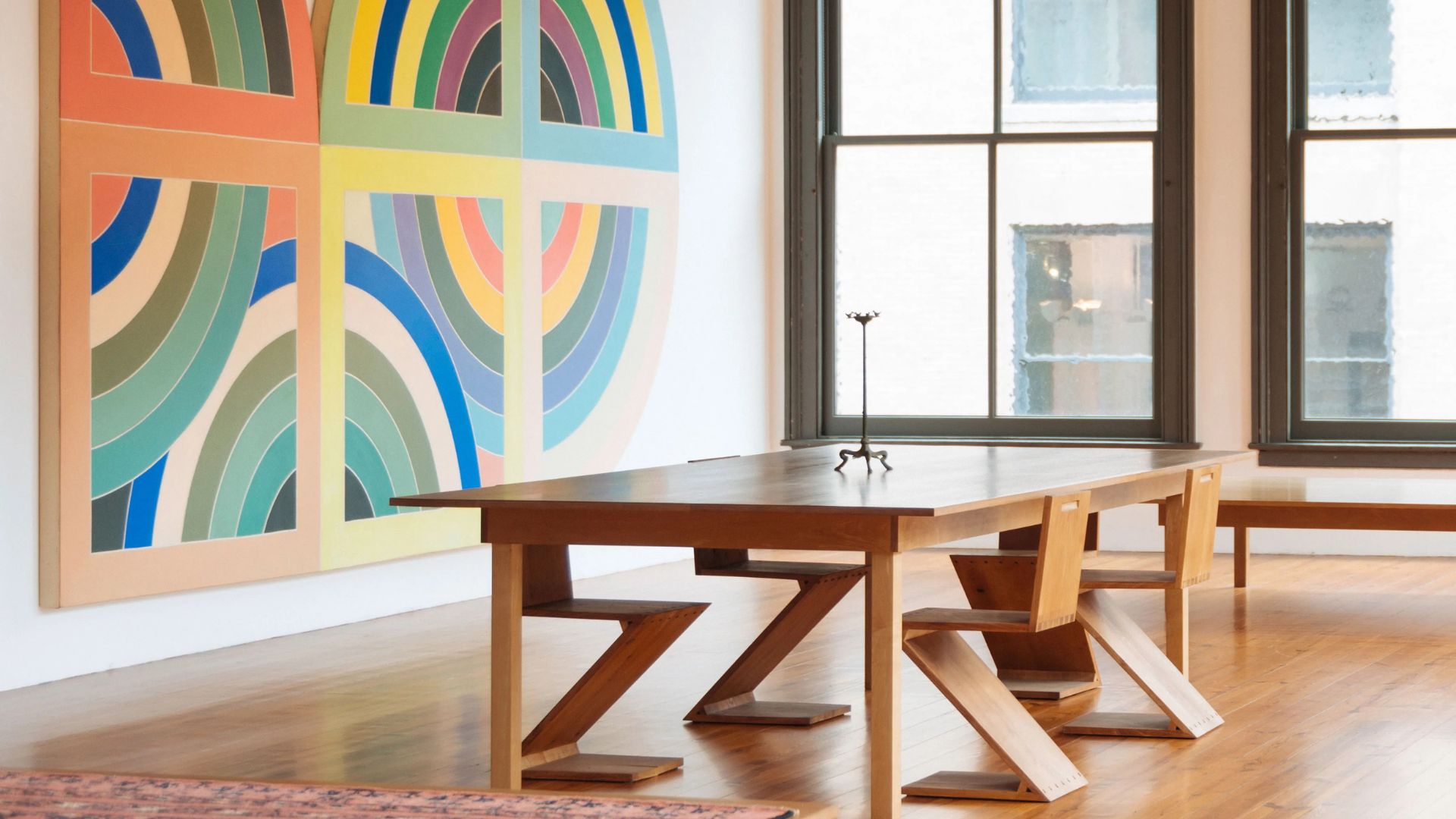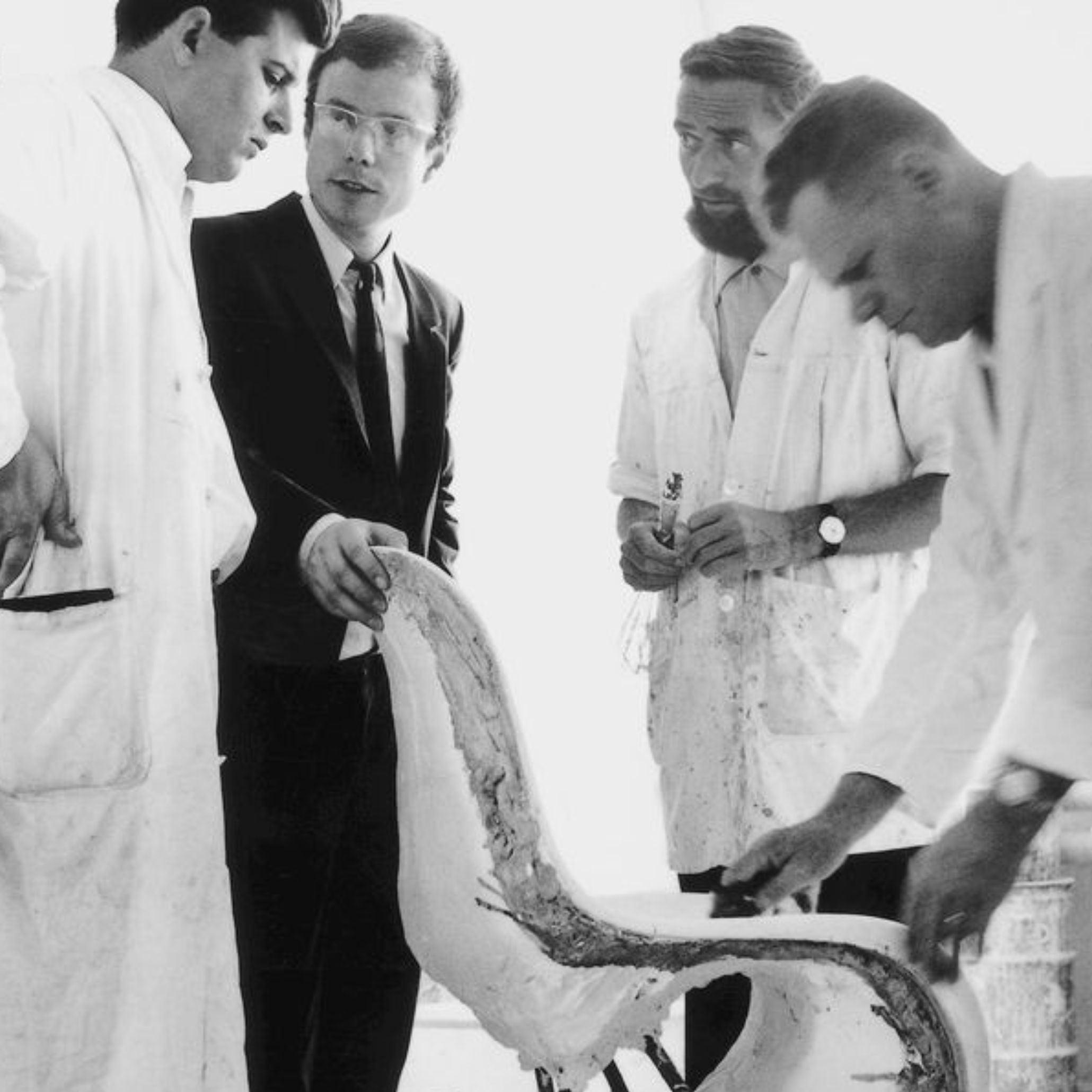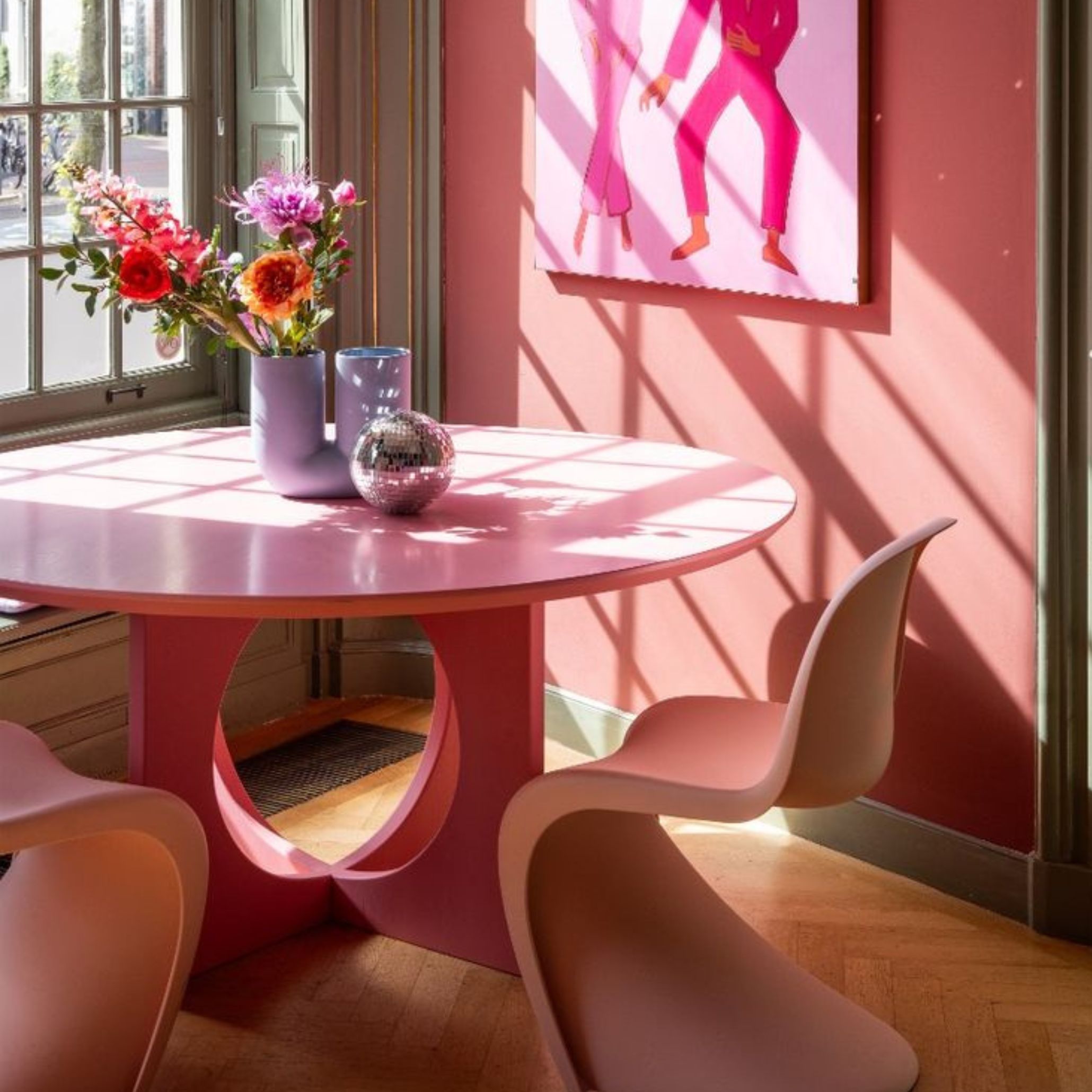Timeless Design Pieces: The Panton Chair
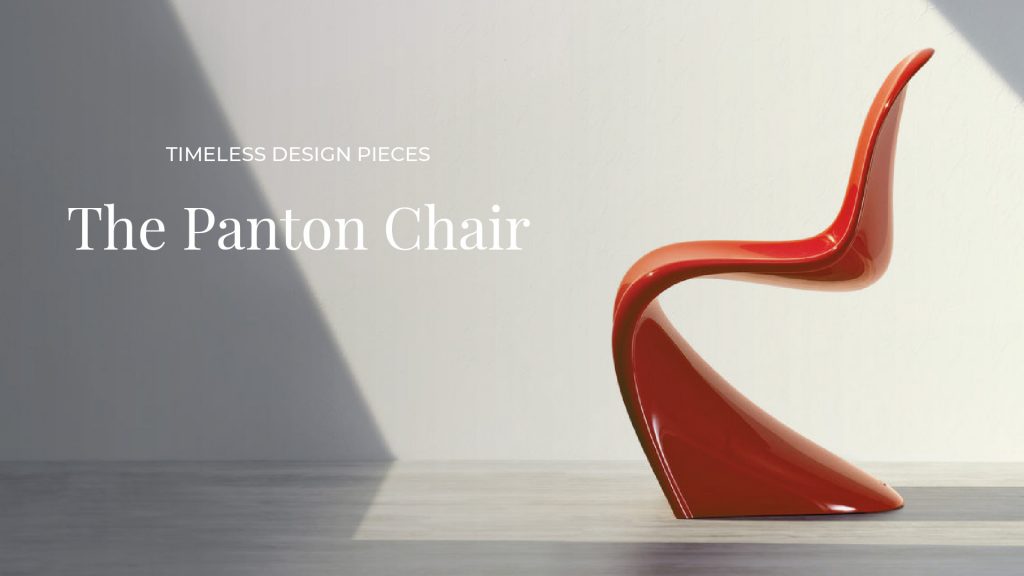
Each piece comes with history, and some create history. Created by the Danish designer Verner Panton, the Panton Chair has become a legendary piece, with its smooth, futuristic curves and exceptional production, becoming inspiration for designers all around the world.
Known as one of the most groundbreaking achievements in furniture design, the Panton Chair redefined the possibilities of form, material, and production. With its seamless dynamic design, it challenged traditions and outlined the optimism of mid-century modernism.
Discover the full story behind this revolutionary design and its prevailing influence on contemporary interiors.
- Source: Pinterest
Panton’s Vision: The Making of an Icon
The story behind the creation of Panton Chair stays true to its marker’ visionary approach. Verner Panton, an iconic Danish furniture and interior designer, was mostly known for his innovative and futuristic designs, particularly his use of plastics and vibrant colors.
Inspired by Gerrit Rietveld’s Zig-Zag chair and a stack of plastic buckets, Panton wanted to design a seamless, stackable chair that challenged conventional four-legged structures. His vision was to create a chair that was not only functional but also a work of art, embodying modernity and movement. At the time, his concept was innovative as plastic was still a new material used in furniture design and its potential had not yet been completely explored.
- Zig-Zag Chair by Gerrit Rietveld | Source: Pinterest
However the process of creation of the Panton Chair was exhaustive, caused by considerable technical challenges, as more than 20 manufacturers rejected his design as structurally or financially unfeasible.
Panton, determined to make his visionary concept come to life, experimented with various materials from Fiberglass-reinforced polyester resin to Polypropylene, before collaborating with Vitra, a Swiss manufacturer. This collaboration took place between 1963 and 1967, transforming manufacturing processes with the creation of the first single-form injection-molded plastic chair.
The Panton Chair became an instant icon, celebrated for its sculptural elegance and functional adaptability.
- Source: Vitra
- Source: Pinterest
Design and Construction
The Panton Chair remains as revolutionary now as it was in the 1960s. Its unique S-shaped design combines functionality and elegance seamlessly, providing ergonomic support in a sleek and minimalist form. The chair’s bold structure, which appears to float without visible support, transformed conventional chair designs.
The first chair ever made from a single piece of molded plastic, the Panton Chair, became a groundbreaking milestone in furniture design. This remarkable invention required sophisticated production techniques and materials that could sustain its suspended structure, which resulted in material exploration in order to achieve the intended outcome.
- Source: Vitra
However, over the years, the Panton chair has gone through several innovative variations:
- 1967-1968: Crafted from fiberglass-reinforced polyester resin, giving it a glossy appearance but adding weight and cost.
- 1968-1971: Transitioned to painted polyurethane rigid foam, providing bright colors but reduced durability.
- 1971-1979: The use of thermoplastic polystyrene (Luran S) was introduced, resulting in a lighter and cost-effective chair.
- 1983-present: Vitra reintroduced the chair crafted from painted rigid polyurethane foam, preserving its signature design.
- 1999-present: The current version uses polypropylene, a durable, lightweight, and recyclable material that aligns with current sustainability practices.
Each evolution reflects improvements in material usage and manufacturing while staying true to Verner Panton’s visionary design. The Panton Chair continues to inspire contemporary interiors, confirming that truly iconic designs transcend time.
Influence on Contemporary Furniture Design
Being the first-ever molded plastic chair crafted from a single piece, Panton emerged as an icon in the sector. Opening up the way for designers to be innovative and experiment with new materials and manufacturing methods in the furniture production, producing unique pieces.
Its influence extended beyond borders and time, reaching contemporary furniture design, which currently serves as a perfect illustration of this design approach. As the main goal of contemporary furniture design is to create pieces that blend functionality, simplicity, and innovation perfectly, the Panton chair represents the perfect harmony among these components.
- Source: Pinterest
- Source: Pinterest
This piece continues to be used in various iconic interiors, infusing living spaces with the essence of minimalism and functionality. Remaining a symbol of revolutionary design, inspiring contemporary interiors globally, and serving as a powerful reminder of the impact that visionary thinking and bold creativity can have on the world of design.


